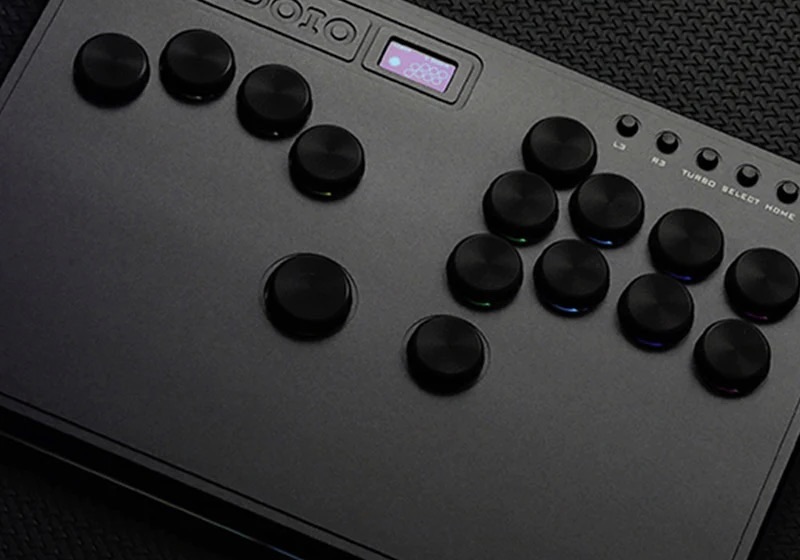Typing is a commonplace activity for countless individuals, akin to a serene ballet performed by fingers gracefully moving across a keyboard. However, envision a scenario where you could elevate your typing prowess to unprecedented heights, achieving unparalleled speed and efficacy. The pursuit of the swiftest keyboard arrangement is a captivating journey, featuring challengers eager to usurp the longstanding dominance of the QWERTY layout. This piece will venture into the realm of alternative keyboard layouts, delving into their unique design principles and the possibility of catapulting you into the realm of typing excellence. Prepare yourself for an enlightening exploration of the mechanics that underpin these keys!
The Battle of Keyboards: QWERTY and its Rivals
QWERTY has become the de facto keyboard layout, widely embraced across the globe. Despite its ubiquity, the QWERTY layout has faced claims that several alternative layouts can outperform it in terms of typing speed and efficiency. One such notable alternative is the Dvorak Simplified Keyboard. This keyboard layout adheres to a strategic design principle that aims to place the most frequently used keys within easy reach. Theoretically, this can reduce finger movements to a great extent and augment typing speed.
Dvorak Simplified Keyboard: An Eminent Contender against QWERTY
The Dvorak Simplified Keyboard layout is a brainchild of Dr. August Dvorak and his brother-in-law, Dr. William Dealey. It was brought to light in the 1930s and has since gained significant traction for its ergonomic design. The layout endeavors to be not just faster, but also more comfortable for users, compared to the traditional QWERTY keyboard layout.
The fundamental advantage of the Dvorak Simplified Keyboard layout is that it prioritizes positioning the most frequently used keys under the user’s strongest and fastest fingers. This thoughtful arrangement aims to minimize strain and prevent fatigue during long typing sessions. Furthermore, it contributes to the maintenance of user’s finger health and enhances sustainability for long-term typing activities.
Unveiling the Benefits of the Dvorak Simplified Keyboard Layout
Skyrocketed Typing Speed
Proponents of the Dvorak layout ardently maintain that its carefully thought-out design can significantly ramp up typing speed. This is mainly attributable to decreased finger movement necessitated by the optimal positioning of keys for frequently used letters and combinations.
- By strategically placing high-frequency keys on the middle row (home row), the Dvorak layout prioritizes the path of least resistance, which naturally translates into amplified typing speed;
- The alternation between hands in typing common words also contributes to the speed-up, maintaining balance and rhythm in typing, thereby enhancing overall performance.
Heightened Comfort Level
The ergonomic attributes of the Dvorak layout focus on mitigating the strain exerted on the fingers, hands, and wrists during continuous typing. This can potentially mitigate the risk of RSIs (Repetitive Strain Injuries) which are commonly linked to prolonged typing sessions.
- The layout’s design minimizes the distance your fingers need to travel, reducing fatigue and strain. This layout cares not just about speed, but also the well-being of the typist.
Amplified Typing Efficiency
By meticulously placing commonly used vowels and consonants on the home row and minimizing finger travel, users are more likely to experience a surge in typing efficiency. This could lead to a noticeable reduction in typographical errors, enhancing overall productivity.
- The design of the Dvorak Simplified Keyboard layout positions over 70% of keystrokes on the home row, as opposed to the mere 32% offered by QWERTY. This, combined with the left-to-right hand alternation, significantly enhances typing efficiency;
- Another factor that plays a crucial role in promoting efficiency is the placement of lesser-used keys on the bottom row, which naturally has the farthest reach. This strategy further lessens the need for extensive finger movement, thus promoting accuracy and efficiency.
Ponder Before You Leap: Key Considerations Prior to Transitioning to a New Keyboard Layout
When contemplating a switch to a unique keyboard layout like Dvorak from the standard QWERTY, it is crucial to weigh several important considerations.
Embrace the Learning Phase:
Transitioning to a new keyboard layout is not an overnight process; it demands time, patience, and diligent practice. Be prepared for the inevitable adjustment period needed to rewire your muscle memory with the new layout.
- This transition phase could range from a few weeks to a couple of months, contingent on the frequency of practice and the individual’s adaptability. Therefore, having realistic expectations can minimize frustrations during the transition period;
- Regular practice is the key here. Devote some time daily to typing exercises to familiarize yourself with the new layout.
Confirm Compatibility:
Do your homework to confirm that your commonly used software and platforms adequately support your chosen keyboard layout. This step is crucial to avoid any unexpected compatibility issues down the line.
- Not all software and devices are equally supportive of alternative keyboard layouts. Therefore, double-check your frequently used tools and platforms for compatibility;
- Some operating systems allow easy switching between different keyboard layouts.
Cater to Personal Comfort:
Remember, the race isn’t just about speed. The effectiveness of a keyboard layout may differ greatly from one individual to another, depending on their typing style and comfort level.
- While QWERTY might suffice for some, the ergonomic design of alternative layouts like Dvorak might prove advantageous for others, especially those who frequently engage in prolonged typing sessions;
- Consider how the new layout will mesh with your workflow. If the benefits, such as enhanced speed or reduced strain, outweigh the cons, it can be a wise choice to switch.
Conclusion
Although alternative keyboard layouts such as Dvorak and Colemak are theoretically advantageous, it’s challenging to assert one as the unequivocal “fastest.” The typing speeds currently recorded as the fastest still predominantly employ the QWERTY layout. Nevertheless, for individuals committed to enhancing their typing efficiency and comfort, delving into alternative layouts like Dvorak or Colemak may prove beneficial. It’s essential to recognize that the most suitable layout is the one that aligns with your personal preferences and typing style. Consider experimenting with various layouts using online simulators before committing to a switch. With consistent practice and dedication, remarkable typing speeds can be achieved regardless of the chosen layout.



